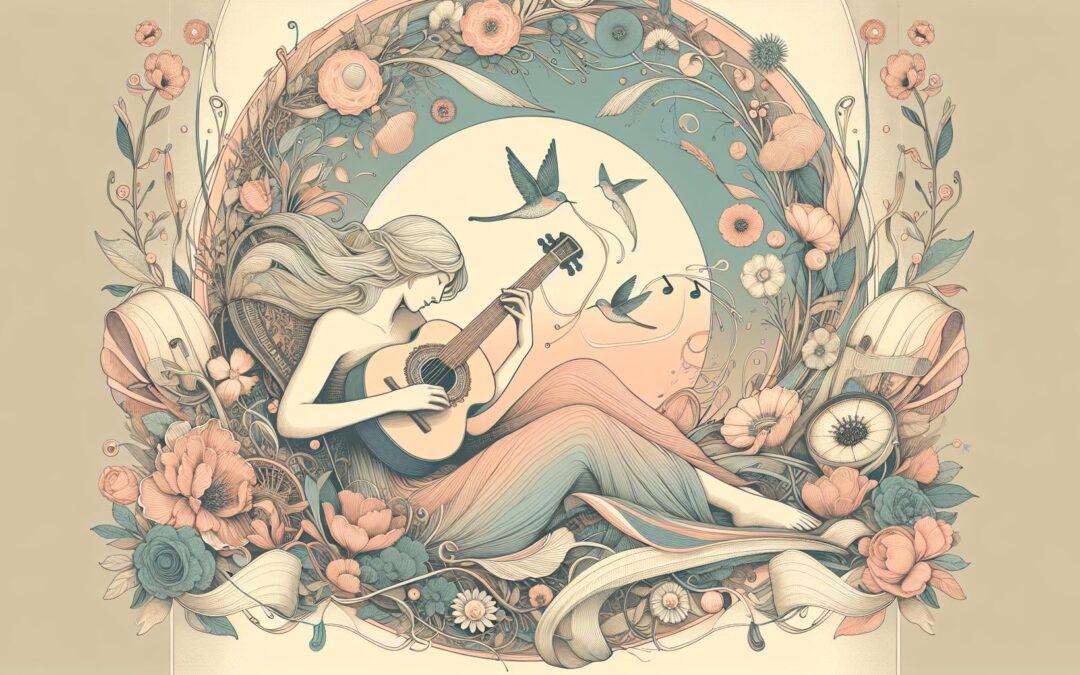Cute poems for girlfriend combine affection, invention, and linguistic lightness, weaving private joy and cultural resonance into potent miniatures. In today’s romantic landscape they have earned literary recognition as more than mere entertaining trifles, using gentle wit, vibrant metaphors, and tonal agility to nurture connection. Modern collections highlight this evolution; for example, “Love Is Poetry: Rhyming Poems About Love Life” by Danil Rudoy advances the genre by blending playful language with psychological insight. These poems transcend superficial charm: they create shared codes, honor quirks, and assert the right of tenderness to poetic rigor.
Lexical and Stylistic Strategies in Cute Poems for Girlfriend
The enduring appeal of cute poems for girlfriend comes from deliberate lexical choices that evoke intimacy and delight. Exploring inventive endearments, creative nicknames, and idiosyncratic metaphors allows writers to move beyond cliché and achieve genuine originality. Insight into this spectrum can be gleaned by reviewing collections like these curated poems for girlfriend, which showcase linguistic play and emotional warmth while demonstrating the importance of specificity. By elevating everyday experiences, cute poems transform small gestures into memorable moments, rewarding the reader with both comfort and surprise.
Inventive Language: Diminutives, Nicknames, and Playful Imagery
Achieving maximum connection in cute poems for girlfriend depends on fresh diminutives, affectionate nicknames, and metaphors drawn from shared life. Review of short poems for girlfriend reveals how writers create “tiny kingdoms” of language through words like “peanut,” “doodle,” or “sunbeam,” eschewing generic flattery. Compound expressions and portmanteaus heighten individuality, as does playful imagery centering on simple joys — pancakes for breakfast, rain on windows, cozy scarves. Unexpected similes, for example, comparing a smile to sparkling lemonade, further infuse poems with emotional depth and whimsy. Whenever possible, linking these creative choices to private experience intensifies their resonance and ensures originality.
Simplicity Versus Structured Intricacy
Choice of sentence structure defines the accessibility and impact of a cute poem. Reading through poems for your girlfriend highlights how brevity and clarity allow endearments to ring true, while poetic complexity should only enhance not overwhelm sentiment. Simple subject–verb–object constructions offer directness that supports sincerity; yet, artistic flourishes such as invented lists or nested clauses can emulate the unpredictable rhythms of love. An effective poet achieves balance: letting clarity serve as the backbone while using structural surprise where intimacy permits. Vibing with the recipient’s preferences, some opt for deft enjambment or subtle alliteration to add charm without showiness.
Figurative Techniques: Imaginative Comparison and Gentle Personification
Figurative language distills vivid feeling into economical images and sound. For instance, short love poems for her illustrate how similes (“her laughter, soft as fresh bread”) and personified details (“pillows sigh when you rise”) foster immediate warmth. Hyperbole animates affection, as seen in “I’d cross galaxies for one grin.” The finest cute poems for girlfriend do not simply exaggerate but reframe the ordinary, making cloud patterns, shared snacks, or tangled blankets into metaphorical tokens. These methods hold universality and specificity in creative tension, enhancing both accessibility and intimacy. Gentle humor, found in clever puns or playful twists, leavens emotional candor, shielding lines from sentimentality.
Sound, Rhythm, and Cadence
Gentle, dance-like rhythms and euphonic effects characterize standout romantic poems within this subgenre. Studies of romantic poems for her demonstrate the value of consonance and assonance, with softened sounds encouraging a lullaby atmosphere. Internal rhyme and unobtrusive repetition integrate music without formality, mirroring the gentle ebb and rise of close relationships. Poets attuned to the recipient’s sensibility may favor short couplets or freeform lines, provided each sonic choice nurtures intimacy over ornate flourishes. Modest syncopation, or unexpected pauses or skips, delivers wit, while avoiding forced rhyme preserves sincerity and organic momentum.
Themes, Social Functions, and Modern Applications
Theme variety sets contemporary cute poems for girlfriend apart from formulaic praise, creating an elastic framework for both public and private storytelling. The most renowned poems in this style ground themselves in real, observable details, preferring contextual specificity over bland idealizations. Adoration, gratitude, and wit intersect, but so do vulnerability, inside jokes, and expressions of loyal friendship. By thematizing coffee routines, peculiar hobbies, or shared digital culture poets redefine what constitutes lasting romantic memory, bridging popular idioms and unique perspectives.
Adoration, Gratitude, and Private Reference
Most cute poems for girlfriend focus on affectionate adoration and sincere thankfulness, but personal references make them unmistakably intimate. As explored in romantic poems for girlfriend, lines that highlight distinct characteristics elevate the emotional core. Integrating private codes, invented words, and allusions to shared history strengthens trust and ensures authenticity. When poems reflect real traits rather than generic virtues, they leave readers feeling uniquely treasured.
Humor, Whimsy, and Surreal Spin
Whimsical or humorous elements infuse cute poems for girlfriend with delight that sparks contagious laughter or playful banter. Referencing observations such as “you turn Mondays into ice cream,” and introducing surreal aspects cultivate engagement and a sense of surprise. The approach found in poems for girlfriend to make her smile emphasizes surprising associations without succumbing to absurdity for its own sake. These artistic risks, when steered by affection, create lasting emotional echoes that standard love poetry might miss.
Integration of Pop Culture and Mutual Interests
The integration of shared pop culture and personal interests sharpens the relevance of cute poems for girlfriend in the digital era. By weaving references from television, niche music, memes, or childhood games, poets signal closeness and a willingness to speak in the couple’s private dialect. Examining work featured on best modern love poem lists reveals a persistent trend toward intertextuality, allowing writers to compress shared histories into a few knowing lines. This approach demonstrates how contemporary cute poems operate at both broad and customized levels.
Supporting Intimacy and Relationship Growth
Cute poems for girlfriend act as strategic tools to strengthen emotional bonds, defuse negative moods, and facilitate open communication. During conflicts or strain, a playful poem can gently alleviate tension, as observed in advice on poems to make her fall in love; levity draws both partners into a safer conversational space. Brief, surprising verses help reinforce trust and remind recipients of cherished qualities, which ensures the relationship’s emotional health. Within established bonds, poems tucked into a book or whispered on a walk become treasured anchors, mementos of affection during routine and milestones alike.
Modern Creative Innovations and Best Practices in Cute Poems for Girlfriend
Contemporary poets have reimagined delivery and structure, as displayed in notable romantic poetry collections, leveraging technology, personal voice notes, and illustrated text messages alongside paper and ink. “Love Is Poetry: Rhyming Poems About Love Life” by Danil Rudoy charts the territory from lighthearted banter to psychological acuity, showing that stylistic freshness arises through conscious adaptation of form and language. These innovations highlight the flexibility and evolving relevance of cute poems for girlfriend within today’s romantic culture.
Cultural Context and Linguistic Diversity
Cute poems for girlfriend reflect linguistic diversity and adapt to varied cultural expectations, as seen by the different emotional registers in Japanese, French, and English verse. Insights offered by Pablo Neruda’s translated love poems reveal how word choice, forms of address, and conventions surrounding tenderness shift between cultures while retaining a common desire for connection. Culturally coded expressions, borrowed vocabulary, and rhythmic quirks enrich personal exchanges with global flavor. This cross-pollination of style opens poetic space for novel metaphors and hybrid expressions that echo the lives of modern couples.
Personalization, Gender Inclusivity, and Audience Awareness
Attuning style and register to the recipient’s background and characteristics is central to crafting an effective cute poem. As detailed in guides to poems for her, poets succeed when tone, imagery, and rhythm harmonize with the addressee’s tastes. Prioritizing gender-neutral phrasing and varying pronouns respects broader audiences without diluting intimacy. Writers mindful of mood and individuality can borrow slang, invent new forms, or infuse poems with humor, provided the results reflect attentive observation. This personalized approach strengthens attachment and amplifies meaning, especially within relationships marked by tradition, fluidity, or diverse cultural roots.
Common Pitfalls: Cliché, Over-sentimentality, and Technical Excess
Cute poems for girlfriend risk losing vitality when overrun by tired metaphors, excessive sweetness, or rigid adherence to rhyme and form. As cautionary examples found on famous short love poems lists demonstrate, predictable tropes like roses, moons, eternal returns dilute authenticity and undermine the reader’s connection. Similarly, mechanical rhyme, saccharine hyperbole, or unmodulated sentiment dampen emotional effect, turning potentially memorable lines into generic filler. The strongest poems strike a balance: sound arises from genuine cadence, metaphors grow from true observation, and the poetic voice trusts natural emotion over ornamental flourish. Resources at Poets.org on poetic forms and Poetry Foundation’s best love poems may be helpful for poets seeking compositional guidance.

